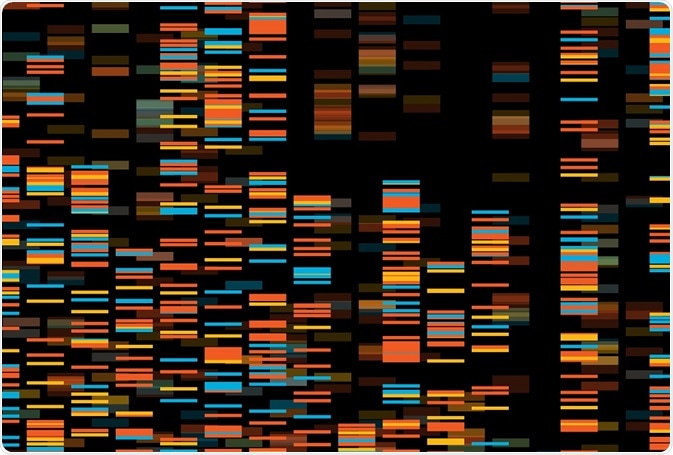

What is Functional Genomics?
Employing a genome-wide approach, functional genomics aims to unveil answers to fundamental questions regarding the roles and interactions of genes and their products.
 Image Credit: Zita / Shutterstock
Image Credit: Zita / ShutterstockHuman Genome Project
Launched in 1990, the Human Genome Project revolutionized biology, enabling the human genome sequence to be mapped. It was a prime example of ‘big science’ – the large scale, cross-disciplinary approach. The availability of this ground-breaking data has enabled further research into molecular processes and interactions that occur in cells on a genome-wide level.
High-throughput sequencing technologies
The use of high-throughput sequencing (HTS) technologies has become a crucial part of genomic analysis. Powerful and cost-effective, HTSs have outshone low-throughput sequencing technologies like Sanger sequencing.
Sanger sequencing is an expensive technique that only allows for individual sequences to be amplified and read. HTS garners large-scale data sets and offers greater insights into the cellular genomic and transcriptomic signatures in various disease states.
Next generation sequencing (NGS)
The NGS tools which are most commonly applied fragment DNA and bind it to adaptors for its subsequent amplification using PCR. The amplified DNA is immobilized on beads or on an array allowing identical DNA fragments to form.
Newer sequencing technologies like Ion Torrent make use of the hydrogen ions emitted from DNA strands when nucleotides are integrated into them. Using a sequencer, this information can be used to create digital analysis.
Transcriptomics
Transcriptomics can be described as the study of transcriptomes and their functions which generates a better picture with regards to gene functions and regulatory pathways. The use of NGSs has improved the analysis of transcript profiles and gene expression. They are also able to determine transcript boundaries and intron-exon junctions.
NGSs have reduced sequencing costs due to the general standard of performance of these sequencing tools in comparison to older methods of HTS and low-throughput sequencing analysis. Despite this, a need for infrastructure and personnel in clinical settings makes NGSs accessible to some.
CRISPR-Cas9
The use of model systems such as CRISPR-Cas9 and chemical mutagenesis have been used to ascertain gene and protein function as well as the relationship between genotype and phenotype. CRISPR allows to cut and paste at a genomic level by cutting genes at desire DNA loci through its ability to target Cas9.
DNA Microarrays
Microarrays are used to assess gene expression patterns. They are made of up individual DNA fragments that have been immobilized on a support like glass.
Through a process of hybridization, DNA or RNA fragments from a sample are attached to the bound DNA and then probed to determine the amount of nucleic acid at each genomic location within the sample. However, it is difficult to design arrays (particularly in regard to complex mammalian genomes) which do not bind closely related DNA and RNA fragments.
This prevents specific genes being detected when they have sequence homology with several others. Another issue is that they are unable to detect sequences which do not have a complementary sequence. This results in a lack of representation of genes which have not previously been recognized in a genome.
The limitations of microarrays, therefore leave NGSs as the more practical option for analysis in functional genomics.
Future perspectives for functional genomics
The field of functional genomics is relatively new. Though some technologies require improvement, the rapid movement of the research in this area suggests that accurate and comprehensive analysis can be made.
Sources
Further Reading
Last Updated: Oct 11, 2018























.png)











No hay comentarios:
Publicar un comentario